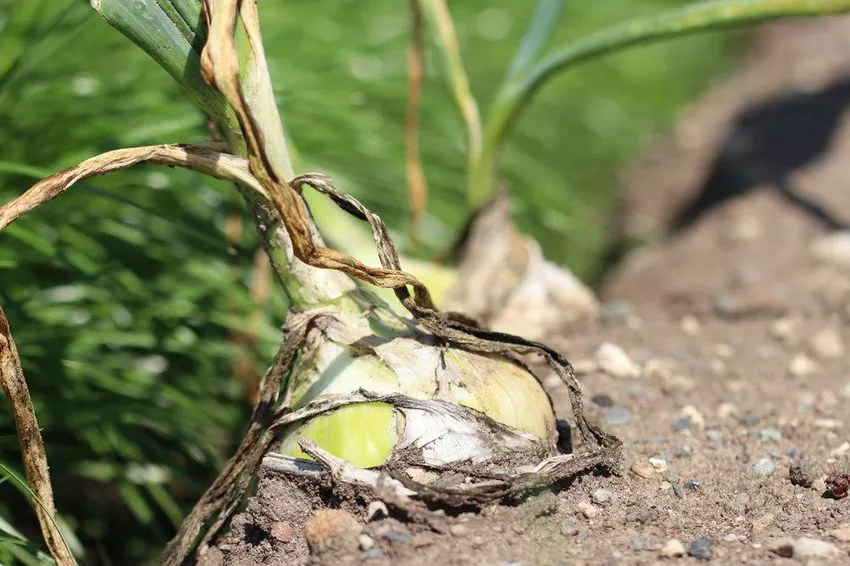- The site
- The floor
- The Sowing
- distance and growth height
- Sowing as an alternative
- The care
- The harvest
- frequently asked Questions

Onions are among the most popular and widespread vegetables of all. If you know how to grow them best, you can look forward to a bountiful harvest.
In a nutshell
- Planting can be done biennially as seeds or annually as onion sets
- With suitable soil, the onion is very undemanding
- When planting in spring, watering can usually be completely avoided
The site
Since they can be planted early in the year, onions grow best in a full sun, well-sheltered spot. A bright cold frame or the greenhouse is particularly suitable for the first planting. Later in the year, however, the plants do just as well outdoors in a sunny location.

The floor
Since the edible bulbs of the onions grow underground, the soil is of particular importance for the development of the plants. They thrive particularly well in soils with these characteristics:
- relaxed
- sandy-loamy
- high humus content
- little stone content / solid or hard components
- not too wet
Tip: Even an unfavorable soil can be improved very well. Before sowing, lift well-rotted compost into the ground. Alternatively, you can also use stable manure, but ideally you should dig this up before winter comes. This allows it to continue to rot until spring.
The Sowing
Typical for the onion is the use of onion sets instead of growing from seed. The onion sets already have a minimum size and first roots. Therefore, they establish themselves particularly well at the chosen location and quickly take up the desired growth in size. The young cuttings can be planted from March, in the greenhouse or cold frame as early as the end of February if the weather is favourable.

distance and growth height
Depending on the species, onions can grow from around 30 to over 50 centimeters in height. So that the individual plants do not interfere with each other, you should plant them as follows:
- Row spacing around 20 centimeters
- Planting distance in the row about 10 centimeters
- Choose the planting depth so that the tip of the bulb just sticks out of the ground
- Water the plants lightly
Sowing as an alternative
Of course, you can also grow the onion sets yourself. To do this, proceed as follows:
- Sow outdoors from April
- Distribute seeds evenly
- Cover the seed thinly with compost and water
- No pricking or singulation required
- Remove the onion sets about the size of a hazelnut from August
- Keep dark, dry and warm until the following spring
- Use as described as onion sets
The care
Basically, onions are very easy to care for plants. Aside from a little water, it doesn't need any other support if the soil is well prepared. Especially in spring, however, you can largely do without watering, since the tubers can cope well with temporary drought. On the other hand, they do not like waterlogging, as the moisture can quickly lead to mildew or rot.
The most common pests are the onion flies. However, you can keep them away very well by mixing them with the following plants:

- carrots
- peppermint
- sage
The harvest
The tubers can be harvested as soon as they reach the desired size. Until then, onions will continue to grow and increase in volume. However, they should be taken out of the ground before flowering, as the nutrient stores are then used by the plant itself and the vegetables are only partially edible.
frequently asked Questions
Why are my onions developing oblong instead of round bulbs?Like most bulbous plants, onions tend to elongate if the soil is too loose. Therefore, after digging, give the soil some time to compact again.
Why do my onion sets rot over the winter?First and foremost, onion sets rot if the humidity at the storage location is too high. Then putrefaction bacteria multiply very well. Make sure you store it in a dry, well-ventilated place.
Are store-bought onion sets better than home-grown?Purchased onion sets ultimately save you time and effort. However, the plants themselves are usually identical to home-grown ones, so that no larger or higher-quality tubers result from them.